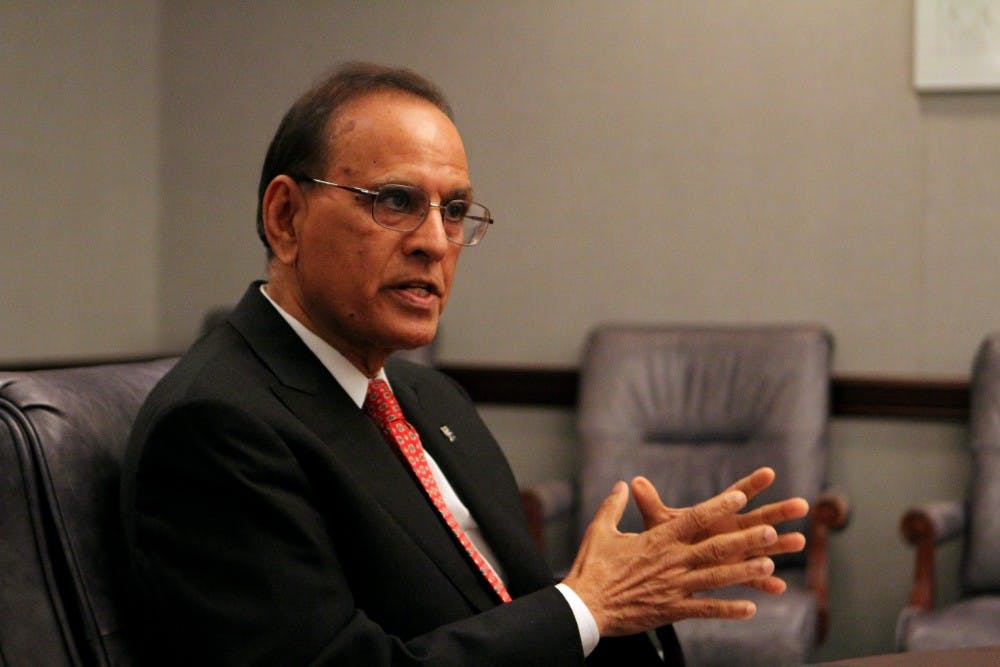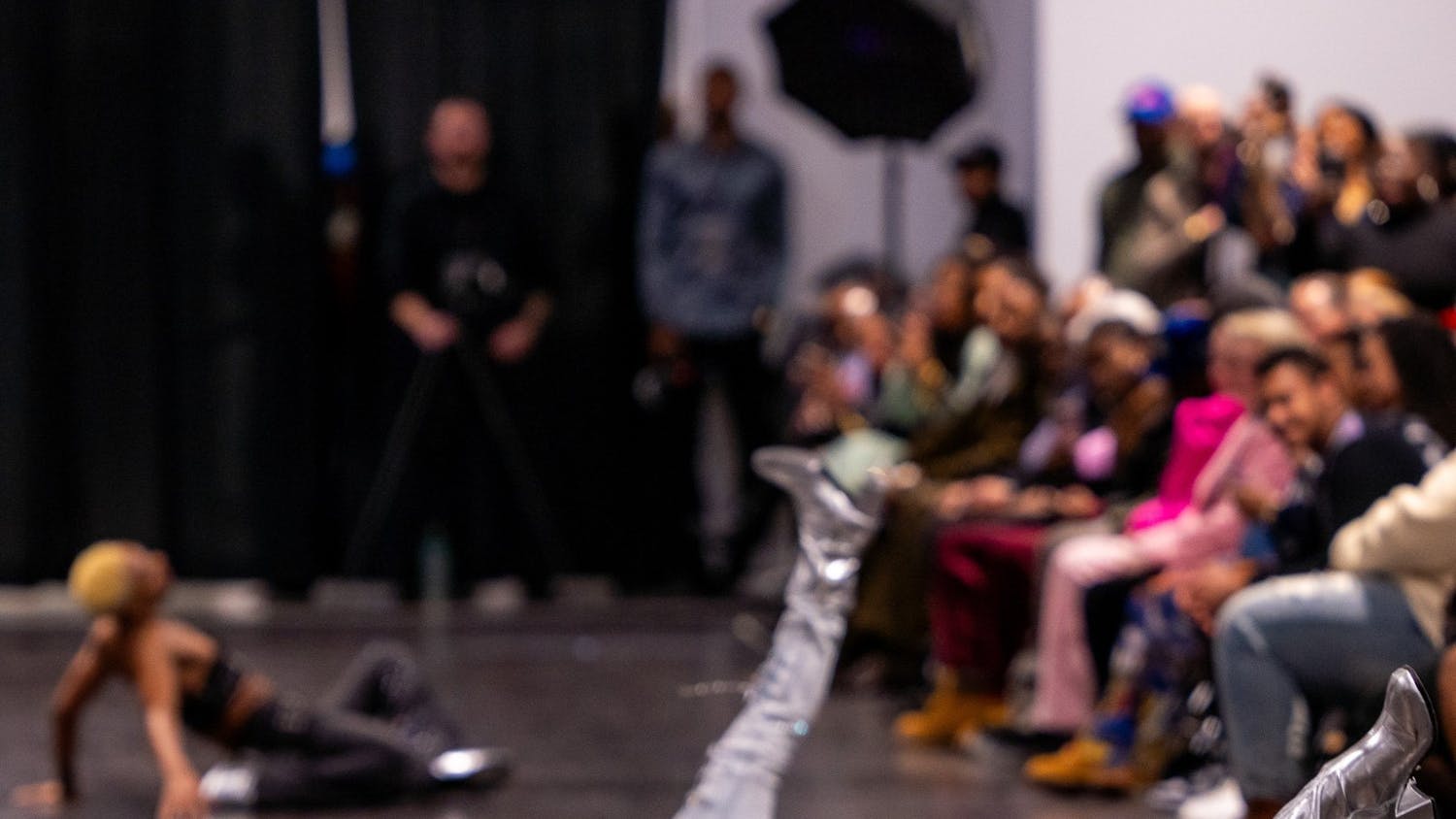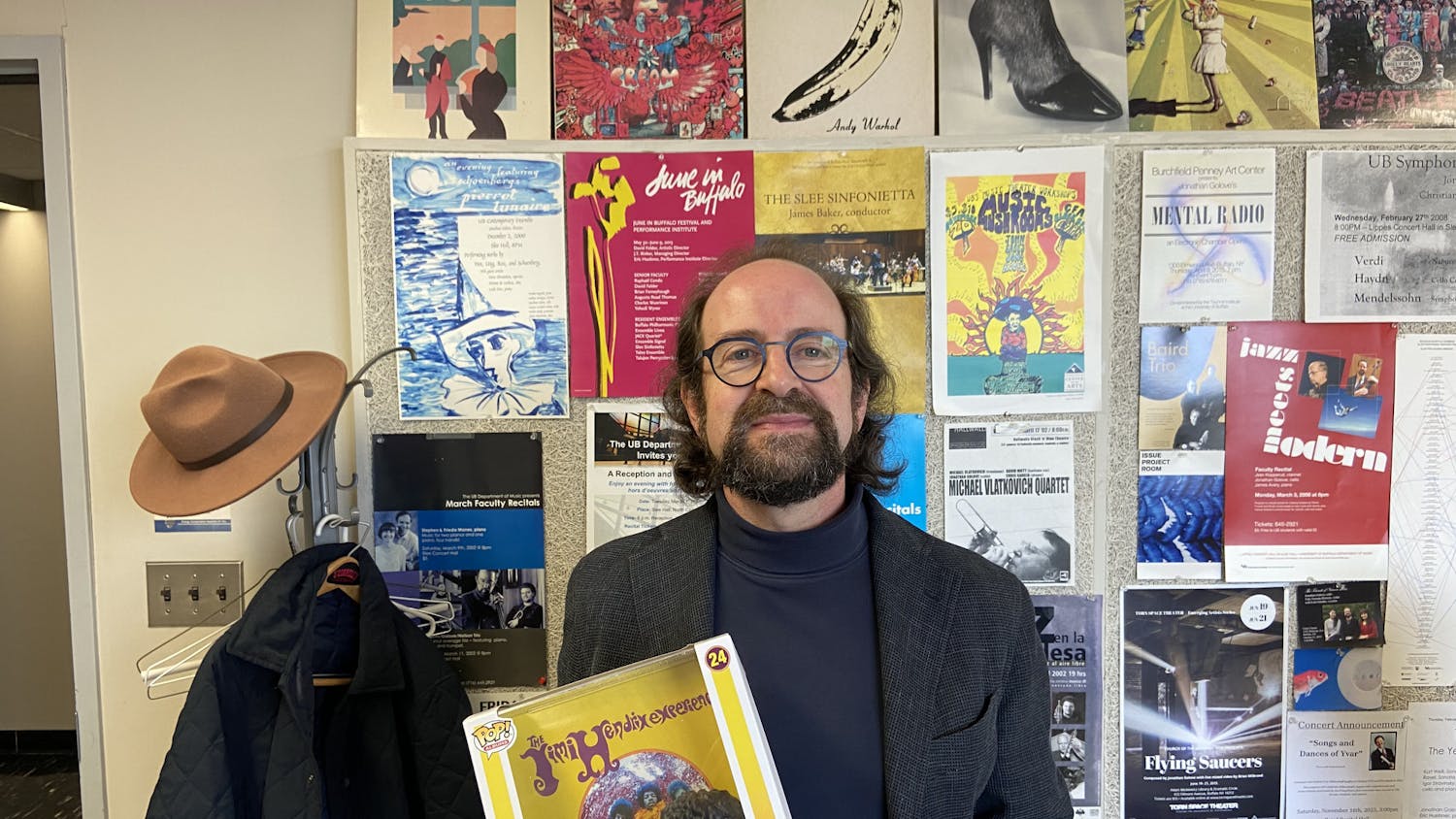Eighteen of the 50 highest-paid state employees in upstate New York in 2017 were UB employees. Many high-ranking UB employees are earning upwards of $300,000 every year, according to a recent survey by New York Upstate.
The salaries in some cases are higher than what’s listed because the numbers don’t include additional compensation from various private nonprofits, like the SUNY Research Foundation and the UB Foundation.
When UB hired President Satish Tripathi in 2011, his letter of appointment stated that in addition to his $385,000 annual salary, he’d receive $115,000 from the SUNY Research Fund and $150,000 from the UB Foundation.
President Tripathi’s state salary is $431,970 as of 2017.
The foundation spent nearly $36.9 million on various forms of employee compensation in one recent fiscal year, according to its 2015 990 tax form.
Besides Tripathi, listed administrators include: Vice President of Finance and Administration Laura Hubbard, Vice President A. Scott Weber and Provost Charles F. Zukoski. In 2017, they made $316,200, $306,000 and $436,198, respectively.
Faculty Senate Chair Phil Glick said many UB hires are recruited nationally and must compete with other large universities. A large paycheck is often required to attract and retain these faculty in Buffalo, he said.
“What these numbers represent are competitive numbers,” Glick said. “I feel bad for some of the students and adjuncts who are struggling to get by, but as your career evolves and students get older, you have another perspective. When all of us were students and trainees, you have to live within your budget. That’s one of the key principles of financial literacy that I teach med students: your time will come, but right now live within your means.”
Glick is concerned, however, with the lack of distinguished professors and female faculty missing from the list. He encourages any faculty in a similar position to talk with their supervisors and make sure their salaries are competitive within the university.
“If I was looking at that list as a woman at UB, I’d want to make sure that I was making as much for the same job as my male counterparts,” Glick said. “Transparency like that is a really good thing. If there’s anyone who isn’t on that list but their equivalent is, I’d bring it to my supervisor and ask about it. Transparency is important in these cases.”
Ezra Zubrow, distinguished anthropology professor and chapter president of the United University Professions union, which represents UB faculty, said he sympathizes with graduate students who have fought for more pay while administrators enjoy six-figure salaries. Zubrow said he wants to see graduate students thrive, but feels outside barriers prevented UB from increasing their stipends in the past.
UB spokesperson John Della Contrada announced Wednesday that there will be an increase in stipends provided for graduate and Ph.D students.
The four-year plan will raise the average English TA stipend to $18,000 in the first two years. In the third and fourth year, the average stipend will be raised to $19,000. The “very best” students will see raises up into the $20,000 range, according to the press release.
“Most of the issues this university faces are not from UB. They’re driven from the SUNY system and the governor’s office,” Zubrow said. “There are people even worse off on the food chain than the graduate students, like the contingent faculty.” Contingent faculty include both full and part-time employees who do not follow the tenure track.
Zubrow said he isn’t surprised at the faculty listed on the New York Upstate infographic. UB is a very competitive university and in order to compete with other schools of its size, it has to dole out large salaries to its most valuable employees, he said.
“I wish that all of the faculty and staff at UB were being paid at this level and I wish that more of the very high-quality faculty and staff at the university would be on this list,” Zubrow said. “In my opinion, these salaries are competitive and [these administrators] are doing as good a job as possible in a highly volatile economic and governmental situation.”
Max Kalnitz is a news editor and can be reached at max.kalnitz@ubspectrum.com





